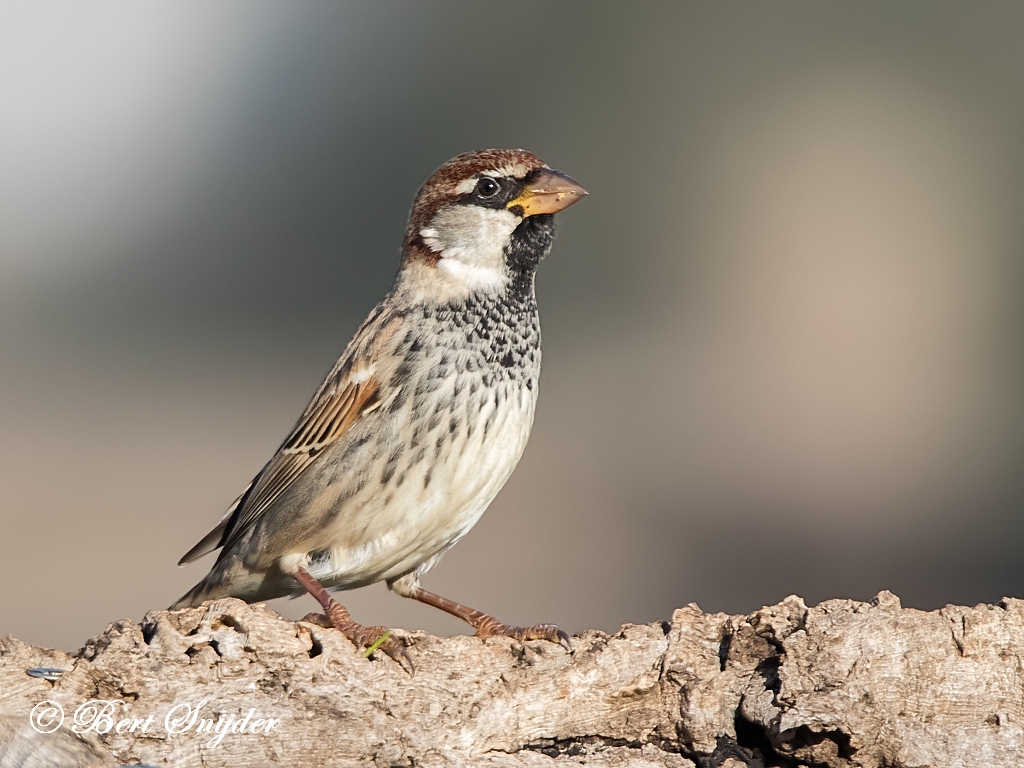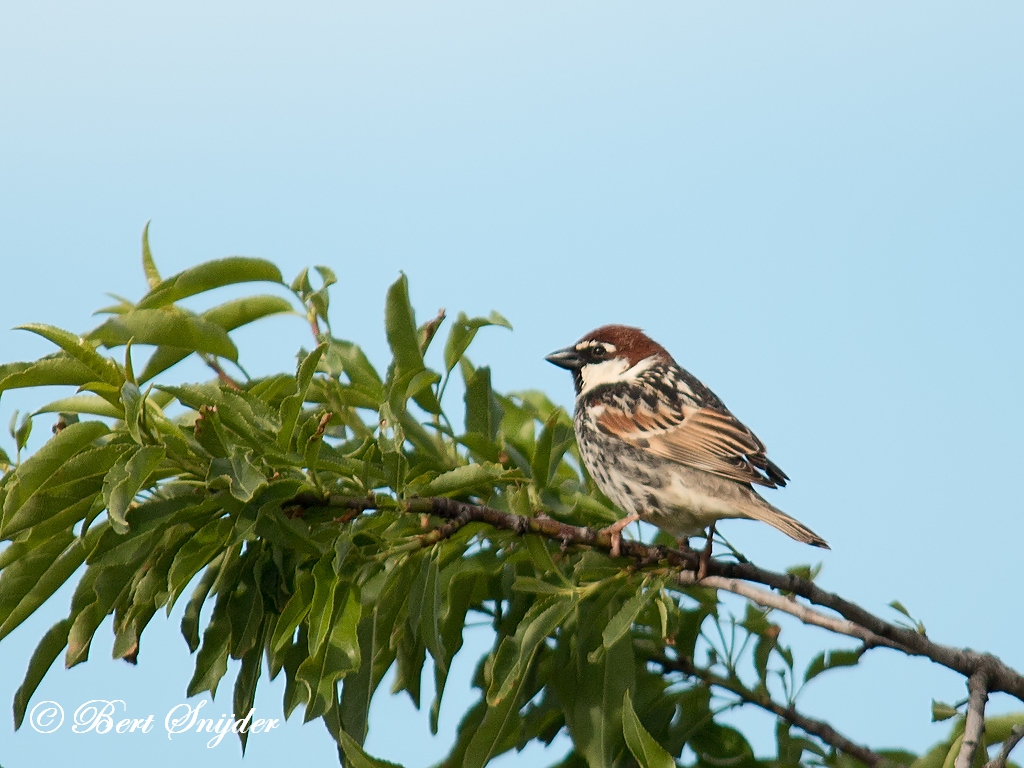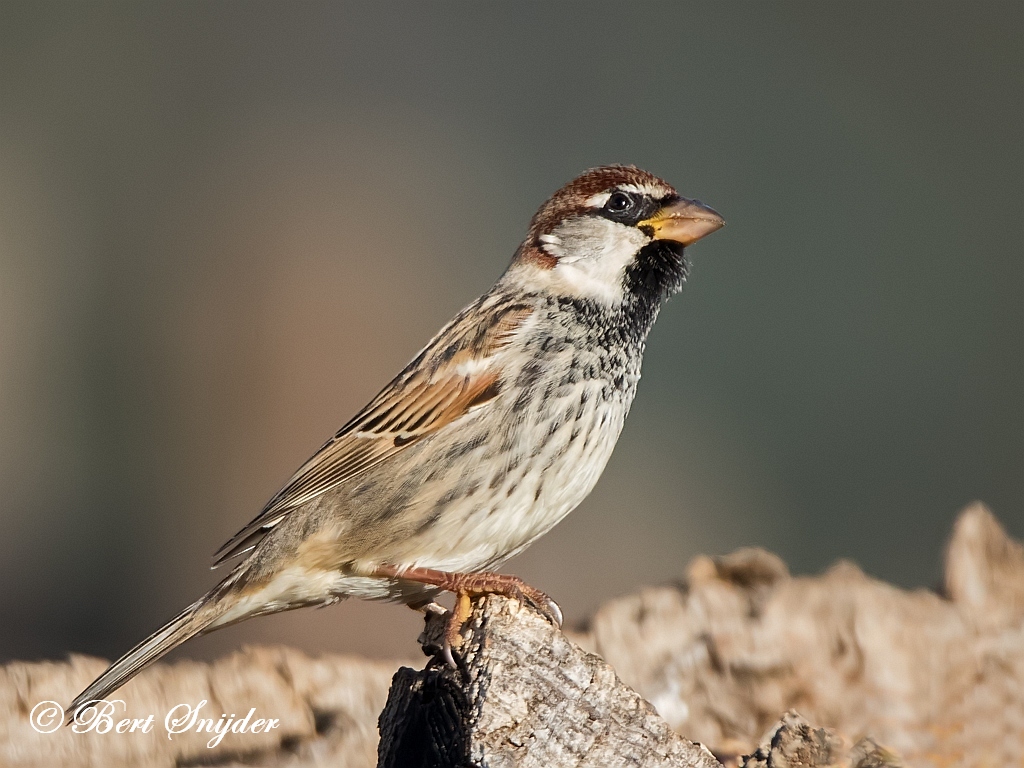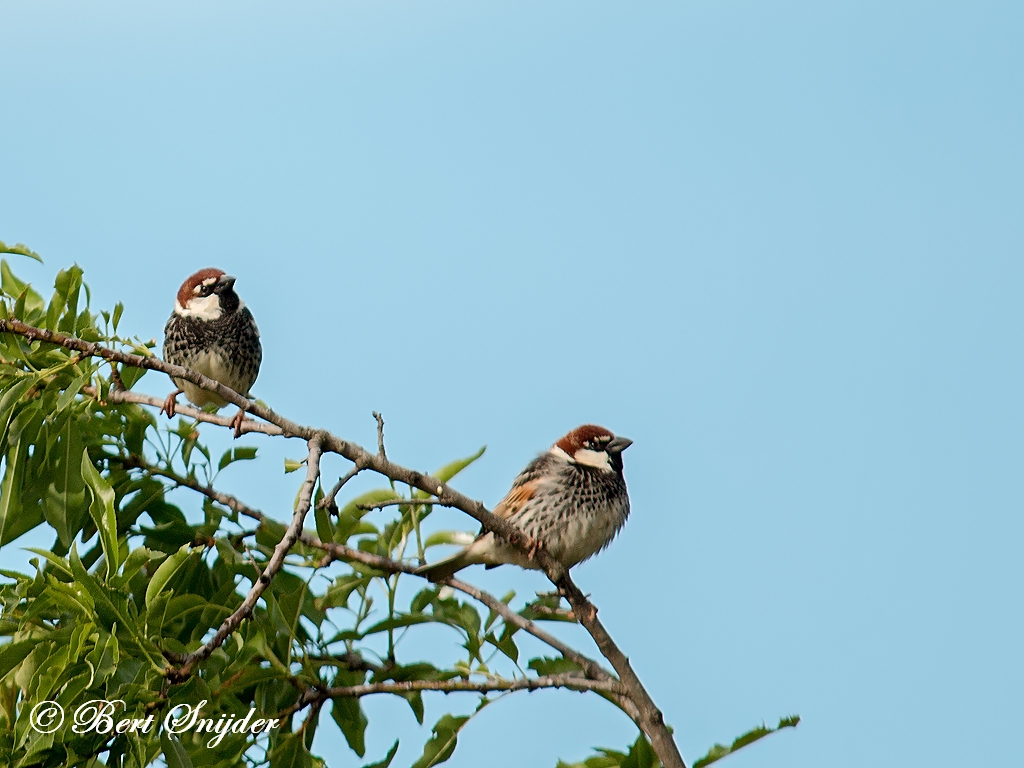Spanish Sparrow, Spaanse Mus, Weidensperling, Pardal-espanhol, Gorrión Moruno
Spotted in the Alentejo region of Portugal. Spanish Sparrow sound
The Spanish Sparrow or Willow Sparrow (Passer hispaniolensis) is a passerine bird of the sparrow family Passeridae. It is found in the Mediterranean region and southwest and central Asia. It is very similar to the closely related House Sparrow, and the two species show their close relation in a “biological mix-up” of hybridisation in the Mediterranean region, which complicates the taxonomy of this species.

More photos at the bottom of this page.
The Spanish Sparrow is a rather large sparrow, at 15–16 cm (5.9–6.3 in) in length, and 22–36 g (0.8–1.3 oz) in weight. It is slightly larger and heavier than House Sparrows, and also has a slightly longer and stouter bill. The male is similar to the House Sparrow in plumage, but differs in its underparts heavily streaked with black, a chestnut rather than grey crown, and white rather than grey cheeks. The female is effectively inseparable from House Sparrow in its plumage, which is grey-brown overall but more boldly marked. The female has light streaking on its sides, a pale cream supercilium, and broad cream streaks on its back.
The two subspecies differ little in worn breeding plumage, but both sexes are quite distinct in fresh winter plumage, with the eastern subspecies P. h. transcaspicus paler with less chestnut.
The western subspecies hispaniolensis breeds in parts of Iberia and North Africa, some islands, and the Balkans. In Iberia it is uncommon, occurring in the Tagus valley, on the steppes of the Alentejo region and sporadically in the northern meseta, the eastern coast, and in the Guadalquivir and Guadiana valleys. While the House Sparrow and the Spanish Sparrow form a “hybrid swarm” in the eastern half of the Maghreb, they coexist with little hybridisation in the western half. In northern Italy and Corsica the Spanish Sparrow is replaced by the Italian Sparrow, and the two intergrade in southern Italy, as well as Malta, Crete, and nearby islands such as Rhodes. The Spanish Sparrow is not known to breed in the Balearic Islands, the Aegean Islands, Corfu, or the Peloponnese, but it occurs on Sardinia, Pantelleria, and smaller islands near the coast. In the Balkans, it occurs patchily from Montenegro across into the Danube valley of Romania and northern Serbia. It is found in mainland Greece and Bulgaria, where it is also uncommon.
The Spanish Sparrow nests in large colonies of closely spaced or even multiple shared nests. Nests are usually placed in trees or bushes, amongst branches or underneath the nests of larger birds such as White Storks. Colonies may hold from ten pairs to hundreds of thousands of pairs. Each pair lays 3–8 eggs, which hatch in 12 days, with the chicks fledging when about 14 days old. Males spend more time constructing nests than females.






Other synonyms:
Catalan: Gorrió de passa, Pardal de passa
Catalan (Balears): Gorrió de passa
Czech: Vrabec pokrovní
Welsh: Golfan Sbaen
Danish: Spansk Spurv
German: Italiensperling, Weidensperling
English: Spanish Sparrow, Willow Sparrow
Spanish: Gorrión Moruno
Estonian: pajuvarblane
Basque: Pardal de passa , Txolarre ilun
Finnish: Pajuvarpunen, pensasvarpunen
French: Moineau cisalpin, Moineau espagnol
Galician: Pardal de passa , Pardal mouro
Croatian: Španjolski Vrabac
Icelandic: Spánarspör
Italian: Passera d’Italia, Passera sarda, Passero spagnolo
Japanese: supeinsuzume
Latin: Passer hispaniolensis
Lithuanian: Ispaninis žvirblis
Dutch: Spaanse Mus
Norwegian: Middelhavsspurv
Polish: wróbel poludniowy, wróbel sródziemnomorski
Portuguese: pardal espanhol, Pardal-espanhol
Romansh: pasler d’Italia
Russian: Chernogrudy Vorobey
Slovak: vrabec obojkový
Slovenian: travniški vrabec
Albanian: Harabeli gjokszi
Serbian: španski vrabac
Swedish: Spansk sparv
Swahili: Shomoro wa Hispania
Travel Birdwatching Holiday Alentejo, Vacation Portugal for birders guided birdwatching Tours and Trips.